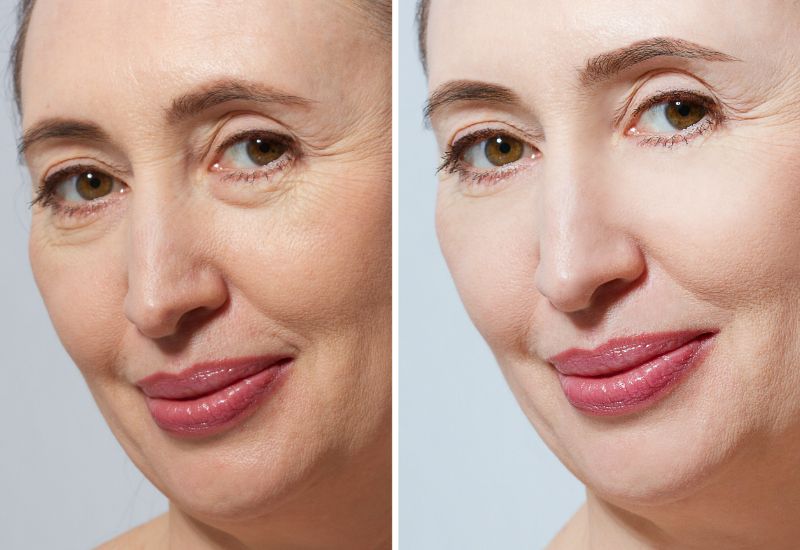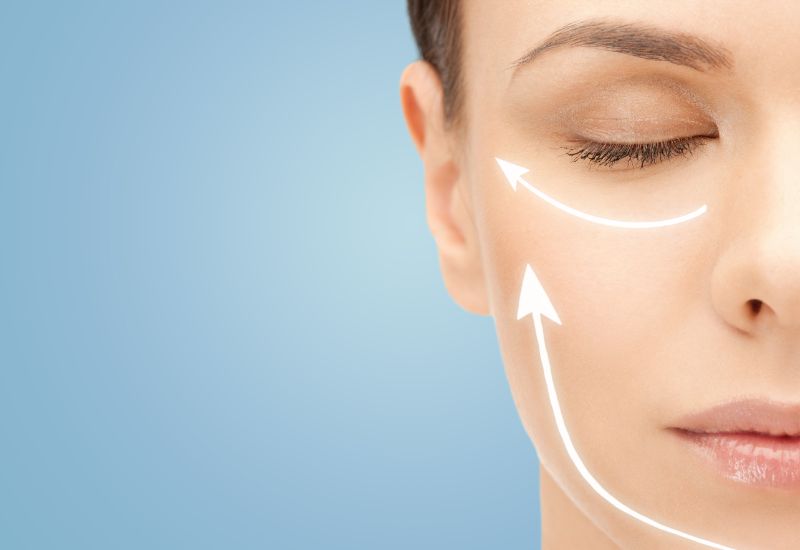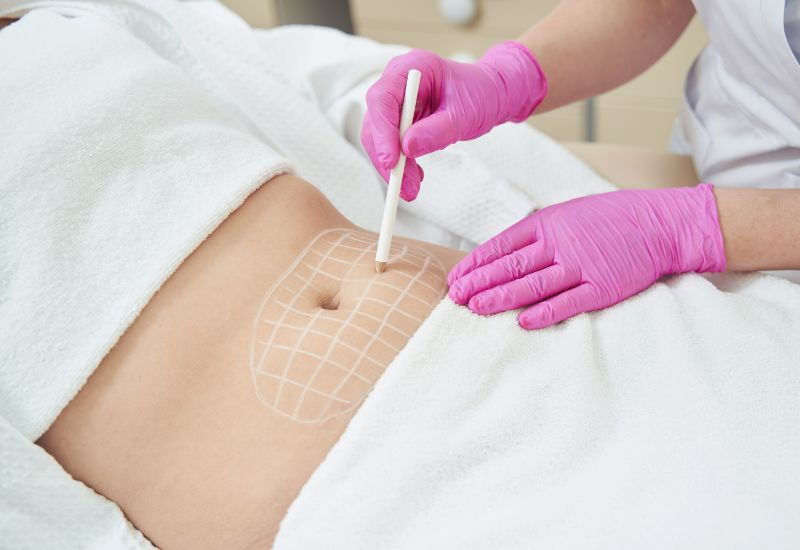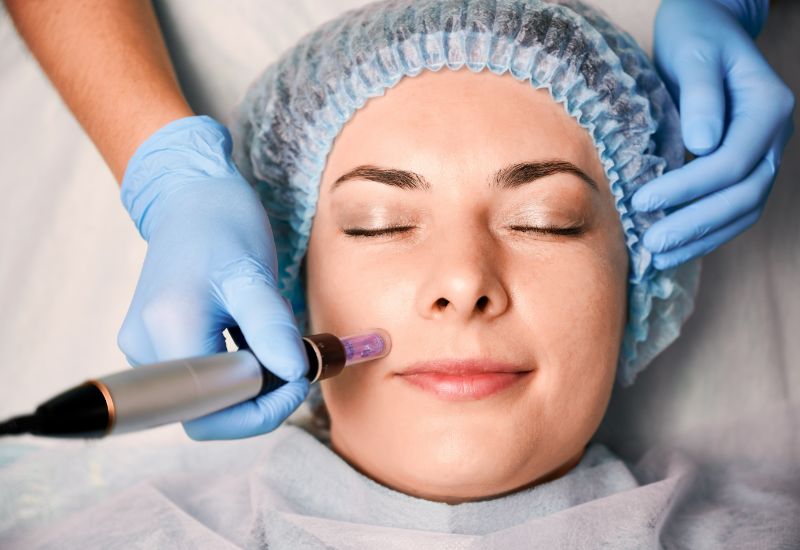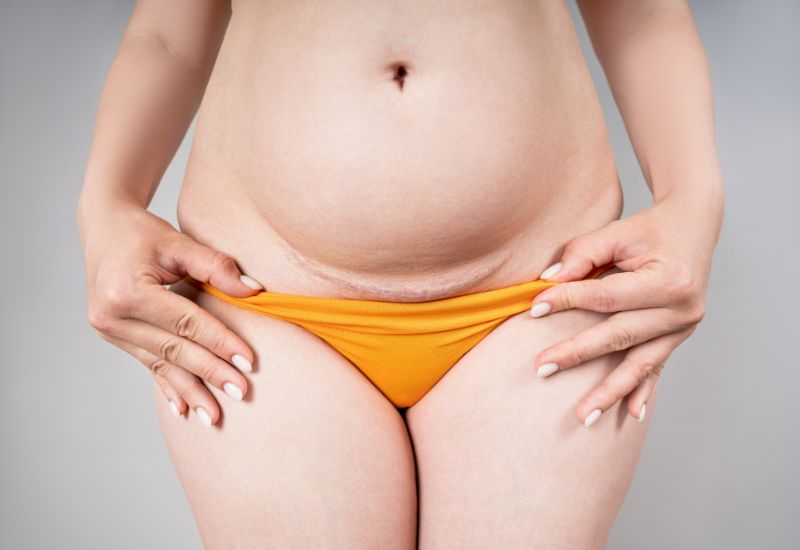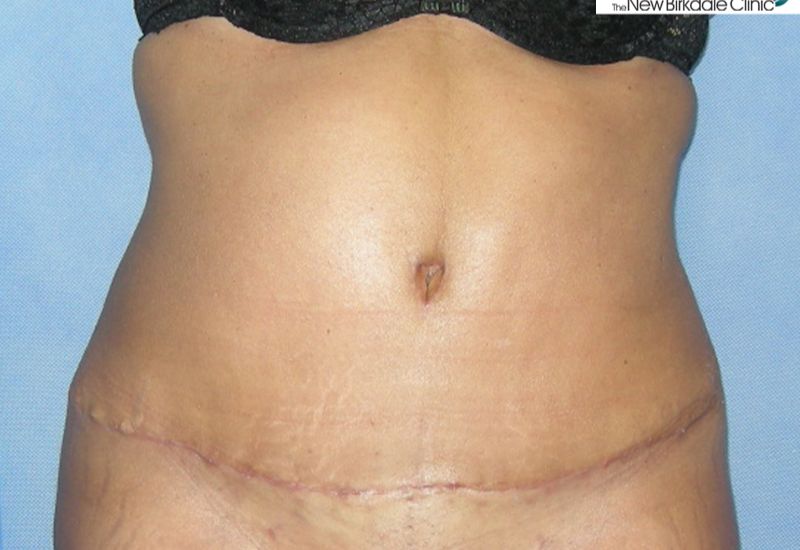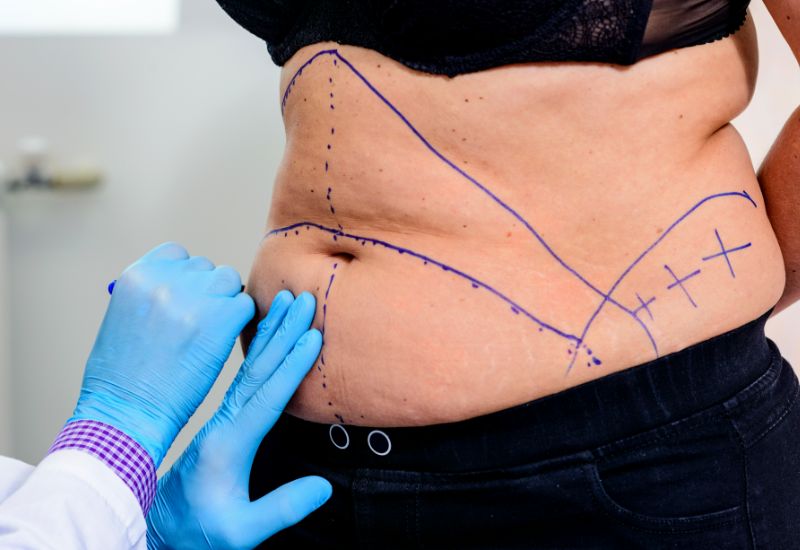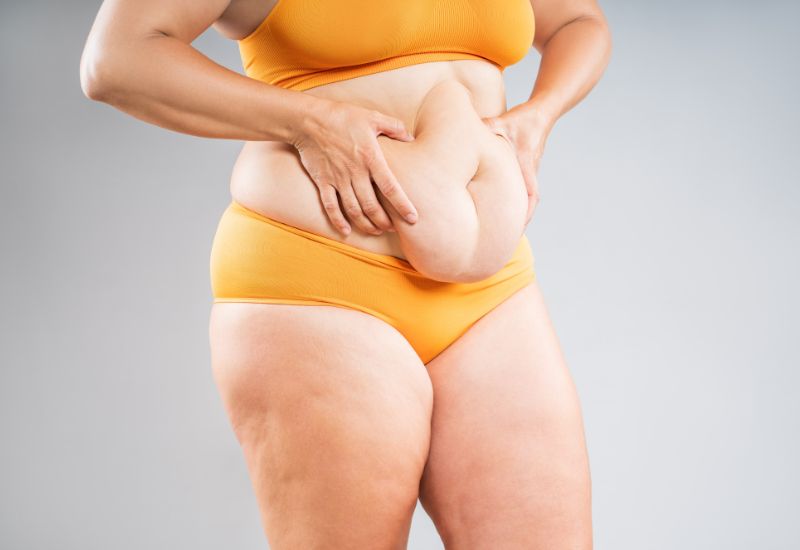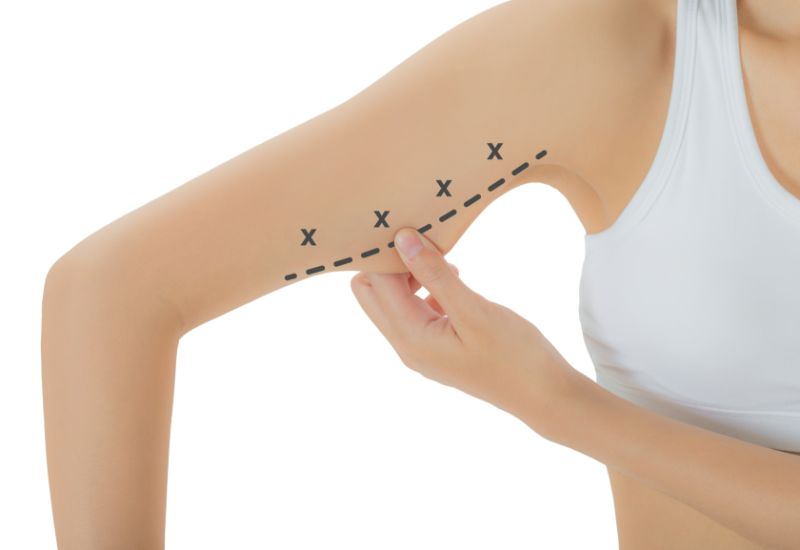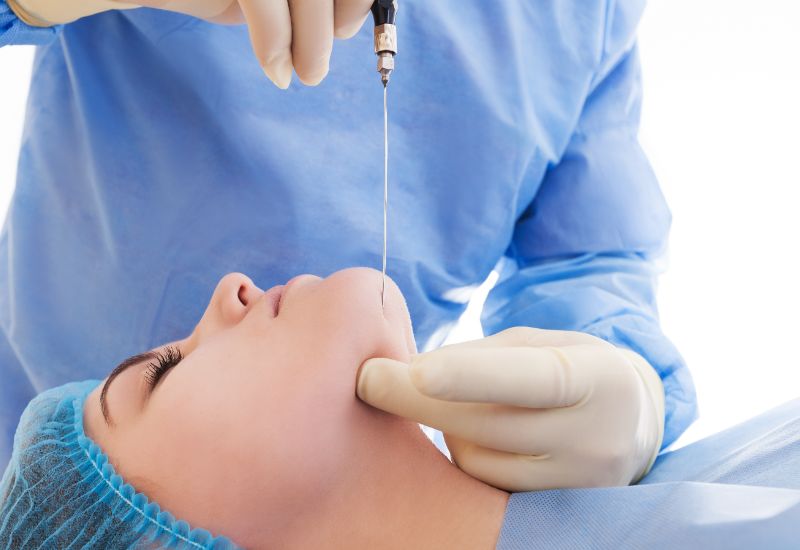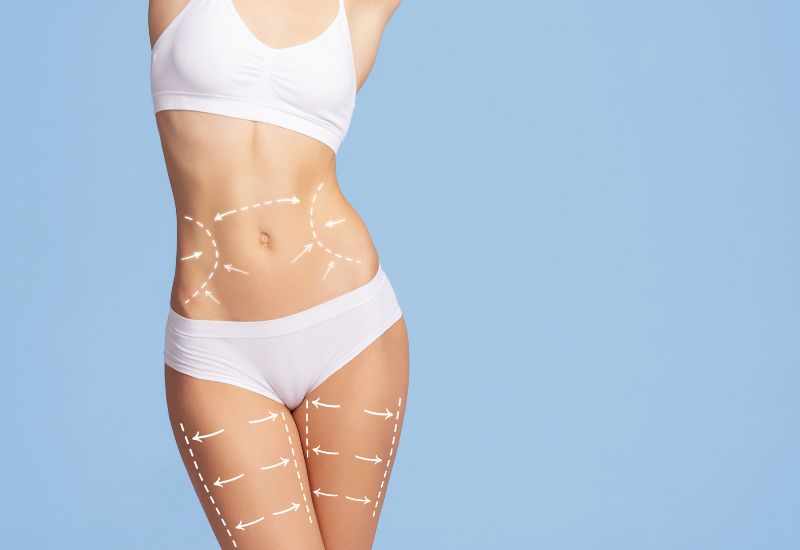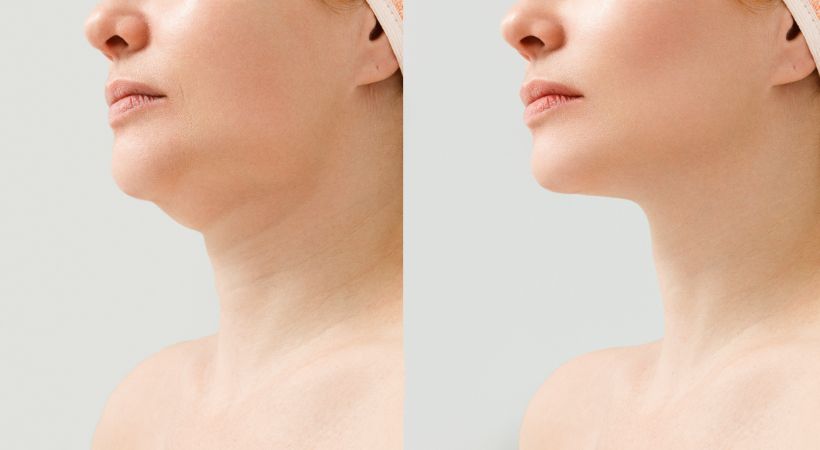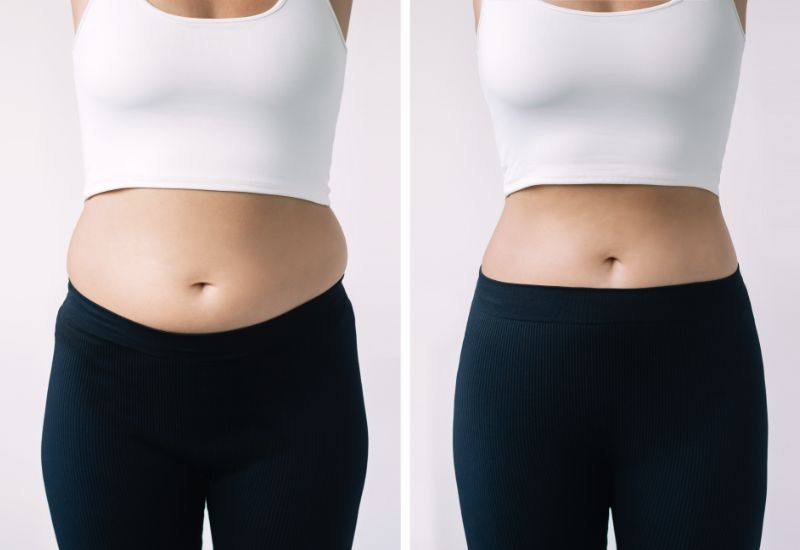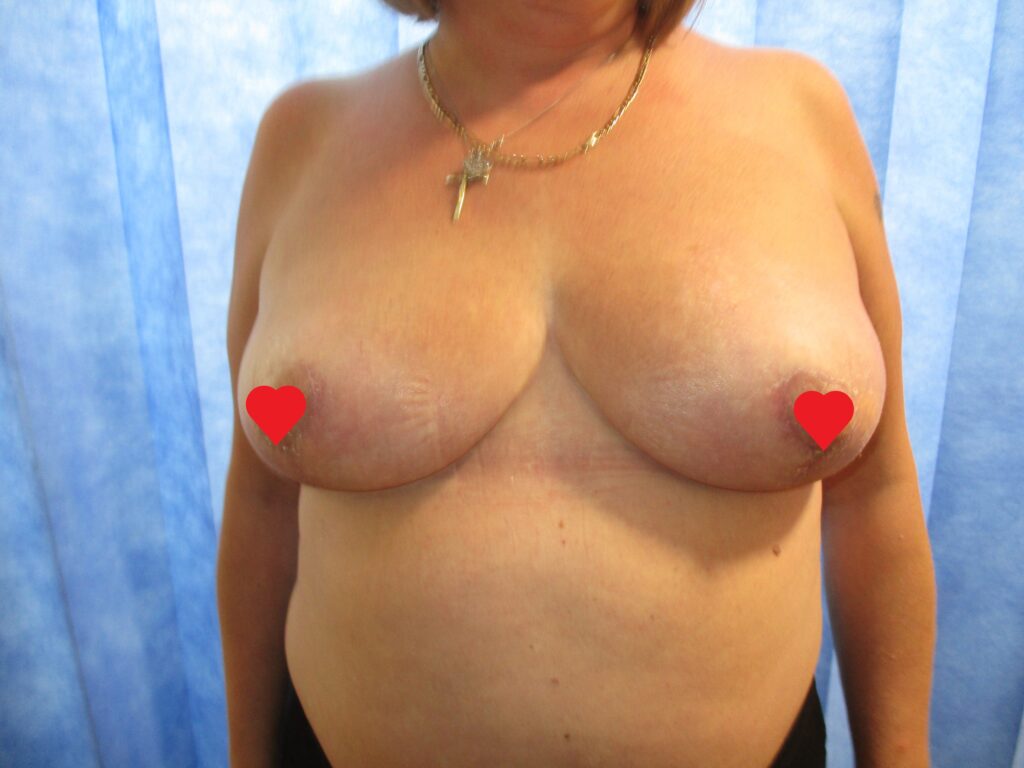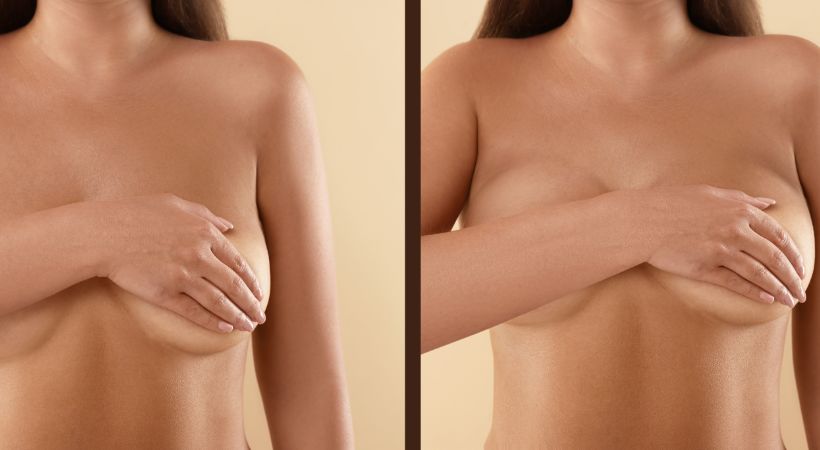The tummy tuck, also known as abdominoplasty is a procedure that reduces excess skin and fat around the abdomen and strengthens the abdominal wall musculature.
Situations like pregnancy or major weight gain can often cause abdominal muscles to separate.
The tummy tuck procedure can help with this.
In this article, we will talk to you through the tummy tuck recovery process and other key information to know about this procedure.
What is a Tummy Tuck?

A tummy tuck is one of the most popular cosmetic procedures for both men and women.
During this procedure, a relatively large incision is made across the trunk from hip to hip in the bikini line.
Surgeons may also decide to make incisions around the belly button and possibly vertically along the trunk if needed.
There is no doubt that struggling with excess skin and body fat can have a significant impact on an individual’s self-esteem.
If you struggle with having loose or sagging skin in your stomach area, a tummy tuck can help flatten and tone that area.
But it’s important to understand that a tummy tuck is not a weight loss surgery.
Although liposuction may sometimes be performed alongside the procedure to remove excess fat.
It also helps create a structured look.
Different types of tummy tucks are available, including mini, full and extended.
Is Recovery From a Tummy Tuck Painful?
It is extremely normal to experience a level of discomfort during the first couple of days post-op.
Initially after a standard tummy tuck you may experience tiredness and have moderate pain for several days to a week.
However, this pain will steadily improve and you will be provided with medication to help ease the pain.
A tummy tuck can achieve improvements for your body but requires a lot of downtime to allow this procedure to heal and ensure you receive the best possible results.
How Long Does a Tummy Tuck Recovery Take?
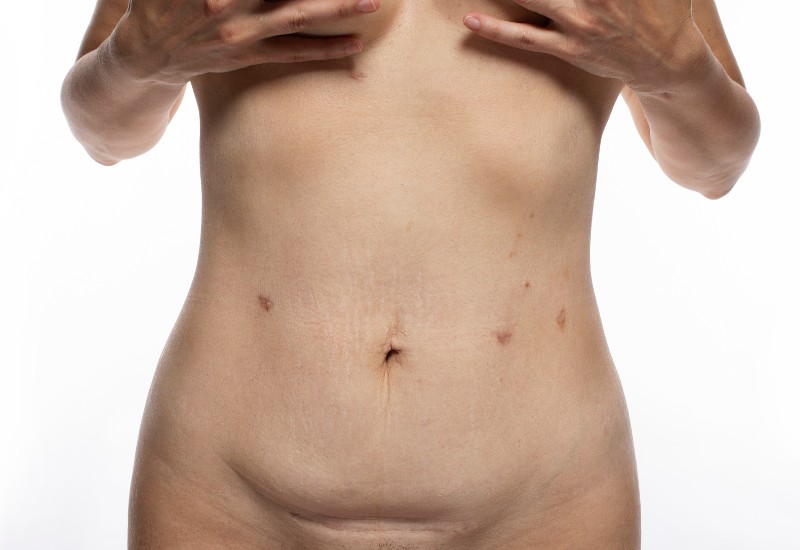
As with any major surgery, recovery times can vary depending on each individual.
It is recommended to take about 4 – 6 weeks off work and very little exercise and you cannot drive for a few weeks after the operation.
As a whole, the operation may take about 6 weeks to fully recover and you will begin to notice the full effect of the tummy tuck.
What Can Affect Recovery Time?
Age
Age can affect recovery time.
However, this can easily be resolved with guidance from our surgeons.
Although your recovery may be slower, older patients do not have a higher risk of complications.
Health
It is important to understand that not everyone will be the ideal candidate for this surgery.
Preexisting health conditions may increase the risk of some issues happening during the recovery process.
To prevent this, ensure you inform your surgeon about any health conditions you have before progressing.
Other topics that may affect your recovery time are:
- Smoking or tobacco product use
- Obesity or overweight
- History of clotting issues
- Use of certain medications
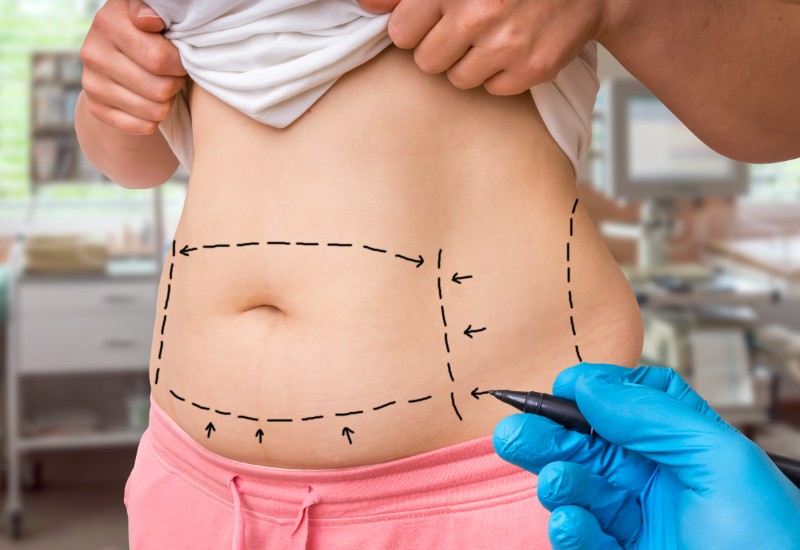
Type of Surgery
As talked about previously, there are several types of tummy tucks that can be performed.
The more extensive your abdominal contouring is, the longer it may take to recover.
Full Tummy Tuck
If you have weakened abdominal muscles or excessive skin you may consider a full tummy tuck to flatten and contour the areas above and below the belly button.
Mini Tummy Tuck
Opposite to a tummy tuck, the mini tummy tuck only affects the lower abdomen which is the area below the belly button.
Those who would like a mini tummy tuck are often almost at their ideal weight but frustrated by stubborn fat between the pubic area and the navel that you might struggle to get rid of.
Extended Tummy Tuck
An extended tummy tuck involves the components of a full tummy tuck with the addition of improving your flanks.
If you are having this type of tummy tuck you may also benefit from liposuction which is usually performed on the hips, love handles and flanks.
This procedure involves a larger incision than a full tummy tuck.
Drainless Tummy Tuck
Drains are often temporarily placed through a small incision during some tummy tuck procedures.
The drains are used to prevent the collection of fluid that builds up between the skin and muscle.
This technique requires slightly more surgical time which introduces its own potential risks.
Depending on the job, you may have the ability to go back to work 1 to 2 weeks after the procedure.
Drainless tummy tuck patients are expected to wear a compression garment during their healing process.
Non-Surgical Tummy Tuck
Non-surgical skin tightening can be very appealing to some people.
If you have mild to moderate loose skin you may be the correct audience for non-surgical tightening.
However, results can only last for up to a year.
Post Surgery Care
If you do not take post-surgery care seriously there is a chance that your end result will be affected and the recovery time will take longer.
Any post-surgery care that is needed will be provided by your surgeon.
During the time of recovery, you will be required to wear a special type of corset or tummy-control pants for 6 weeks.
These two items encourage your skin to heal properly and reduce swelling.
What to Expect With a Tummy Tuck Recovery?

Before going forward with abdominoplasty it is crucial that you understand this is not a fast-paced process.
It will take about 6 weeks (possibly more depending on how fast you heal) to fully recover from this procedure.
You will have to ensure that you follow the surgeon’s guidance during this time period, which may be a hard task if you have kids or work full-time.
What to do Immediately After Surgery
The procedure is performed under general anesthesia on an outpatient basis.
So it is important to bring someone along with you to take you home and support you through the rest of the day.
It may take several hours before it begins to wear off.
Discomfort is extremely normal after surgery, which can be eased with some medication.
During your pre-operative appointment, you will receive prescriptions to take pre-surgery to reduce the risk of infection.
You will also receive pain medication for your discomfort.
What to do in The First Week After Surgery
The first week involves a lot of rest.
This will not only help you heal, but it will reduce swelling too.
And will ensure you receive the best result possible.
Bed rest is recommended for the first 2 days after your procedure has been completed.
And on the 3rd day introducing your body to some exercise is encouraged but should stay limited.
A post-tummy tuck compression garment should be worn at all times during the first week and is encouraged to be worn as much as possible during the whole recovery process.
Patients should stay hydrated and maintain a diet that is low in sodium to reduce swelling.
What to do in The First Month
Some restrictions are lifted after the first week.
However, it is important to stick to your surgeon’s instructions.
It is recommended to lightly massage the treated area to promote healing.
It is common to notice side effects after the first week. These side effect can include:
- Finding it difficult to stand up straight
- Have pain and bruising
- Feel numbness in your tummy for a few months to even years
- Have temporary fluid-filled swelling above the scar
- Have raised scars that may look red or different from your usual skin colour
These are completely normal so do not worry.
Key Things You Need to Do for The Whole Process
Prioritising your abdominoplasty recovery is a crucial part of your overall recovery.
To ensure you continue your smooth recovery, drink plenty of water, eat a balanced diet and stick to any recommendations you receive from your surgeon.
Avoid any abdominal exercises or strenuous activities such as weight lifting, bicycle riding and jogging for 6 to 8 weeks depending on the speed of your recovery.
It is a time-consuming process, so prioritise getting stronger each day as you move toward your end goal of a full recovery.
Why is Taking a Doctor’s Recommendations Seriously Important?
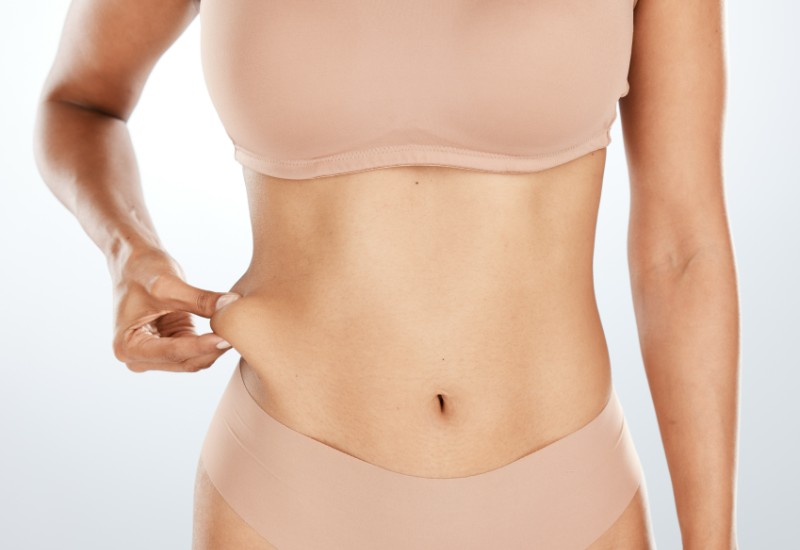
Following a doctor’s recommendations is extremely important.
Your surgeon’s advice and treatment plan will be useless if you don’t follow the advice that has been provided.
If you do not take your surgeon’s recommendations seriously, you will be risking your progress and outcome.
It is no surprise that this is a time-consuming recovery process, so make sure to follow the doctor’s recommendations to ensure the best possible recovery.
With time, your body will heal and your results will begin to be very clear.
Why is a Tummy Tuck Done?
A tummy tuck is encouraged when you would like to lose excess skin or fat and tighten a weak fascia.
It can also help remove stretch marks and excess skin in the lower abdomen.
If you have had fat removed from your abdomen (liposuction), it could be a good decision to also receive a tummy tuck.
The reasoning for this is liposuction removes tissue just under the skin and fat but not any excess skin.
Tummy Tuck Procedures at The New Birkdale Clinic
A tummy tuck is a highly comprehensive procedure that requires weeks/months dedicated to planning, preparation and recovery.
If you can see yourself getting a tummy tuck in the near future, we would love to hear from you so we can assist you along the way.
We’ll help you from your initial consultation right through to post-operation so we ensure you will receive the best possible treatment.
Get in touch with New Birkdale Clinic to find out more.






